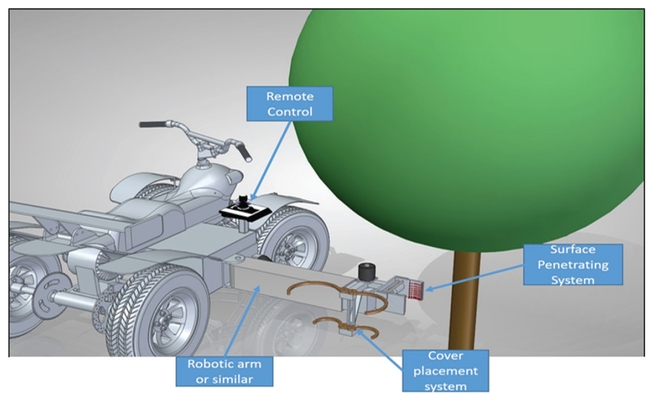
This project focuses on developing an automated method for delivering therapeutic liquid materials directly into the citrus phloem. The delivery method is called Needle-Assisted Trunk Infusion (NATI) and uses an ATV with a robotic arm to deliver the therapeutics.
How exactly is it done, and what are the challenges and opportunities with this new way to treat the disease? Visit the Research Snapshot to learn more: https://ucanr.edu/sites/scienceforcitrushealth/Research_Snapshots/Batuman
We have developed short descriptions of research projects that aim to help in the fight against HLB. These projects include traditional breeding and genetic engineering to create resistant citrus varieties, modifying psyllids, employing other organisms to deliver HLB-resistance and using early detection methods to identify the bacterium in trees.
